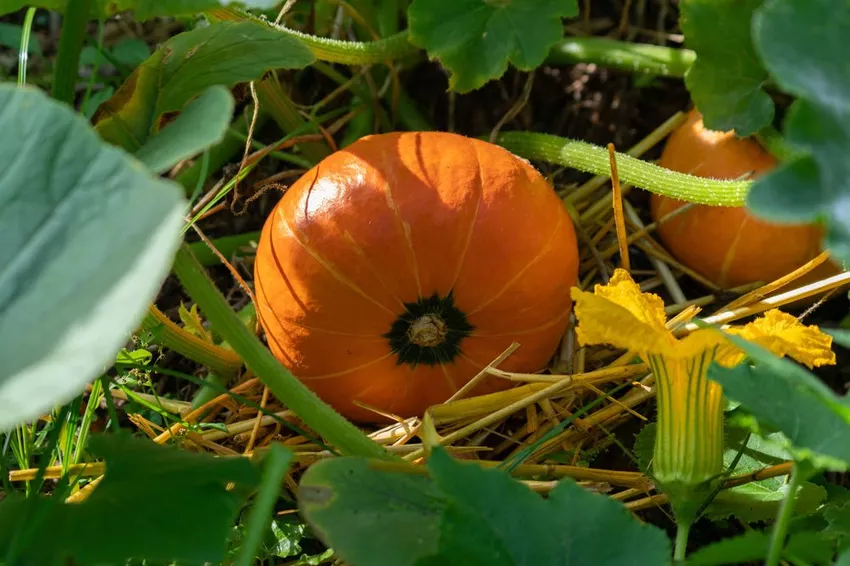If you take good care of your Hokkaido pumpkin, you will reap bounty. We explain what to look out for and what harms Hokkaido.

A magnificent Hokkaido pumpkin is the dream of many gardeners. Not only because there are a number of competitions for the prettiest pumpkins, but also because a plump fruit promises more enjoyment. In order for the plant to grow into a delicious squash, you need to plant the Hokkaido squash properly and also invest a little in care. But don't worry, you don't have to be constantly on hand with a watering can, hoe and fertilizer. Maintenance is easier than you think.
Water Hokkaido pumpkin
Squash plants do not cope well with drought. Therefore, the most important rule of care is to keep the soil always moist. It is very good if you proceed from below when watering and water the soil directly. Not only do you guarantee that the water actually reaches the soil, you also prevent the leaves on the pumpkin from rotting from the moisture.
» Water Hokkaido pumpkin when you're away
But what if you're not there for a long time? There is a good way to avoid longer absences and thus missed casting phases. This option is called indirect pouring. And this is how it's done:
- Dig a small hole next to the pumpkin.
- Place a clay flowerpot or other clay vessel in the hole.
- Now add water to the pot. The clay allows the moisture to penetrate into the soil, ensuring the gourd is always kept moist.
Fighting predators on the Hokkaido pumpkin
 One problem many gardeners can tell you about is snails. The little pests are clearly enjoying the pumpkin plants and are eating the leaves. This will damage the plant.
One problem many gardeners can tell you about is snails. The little pests are clearly enjoying the pumpkin plants and are eating the leaves. This will damage the plant.
- To prevent this, make sure your pumpkin plant cannot be reached by snails. This works particularly well if you set up a snail fence. This has a sharp upper edge that forms a “U” towards the outside. The snails cannot get into the bed over this edge.
- Alternatively, you can also put aPut a plastic bed border with a sharp edge.
- Sawdust, grit, sand, gravel or ash can also help against the snail plague, as the animals are reluctant to move over these surfaces. However, these home remedies are not always crowned with success.
» Tip:
If possible, check your pumpkins for snails every day. Then collect the pests in the evening hours and dispose of them either near geese or far away from your garden.